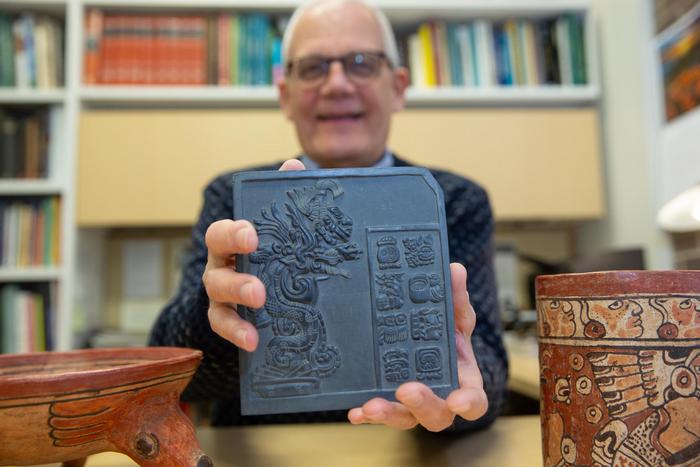For sports fans, places like Fenway Park, Wembley Stadium or Wimbledon’s Centre Court are practically hallowed ground.

Credit: ANDREW HIGLEY
For sports fans, places like Fenway Park, Wembley Stadium or Wimbledon’s Centre Court are practically hallowed ground.
Archaeologists at the University of Cincinnati found evidence of similar reverence at ballcourts built by the ancient Maya in Mexico.
Using environmental DNA analysis, researchers were able to identify a collection of plants used in ceremonial rituals in the ancient Maya city of Yaxnohcah. The plants, known for their religious associations and medicinal properties, were discovered beneath a plaza floor upon which a ballcourt was built.
Researchers said the ancient Maya likely made a ceremonial offering during the ballcourt’s construction.
“When they erected a new building, they asked the goodwill of the gods to protect the people inhabiting it,” UC Professor David Lentz said. “Some people call it an ensouling ritual, to get a blessing from and appease the gods.”
The study was published in the journal PLOS ONE.
The research was carried out through Mexico’s National Institute of Anthropology and History in collaboration with researchers from the University of Calgary, the Autonomous University of Campeche and the National Autonomous University of Mexico.
Researchers from 2016 to 2022 worked at Yaxnohcah in Campeche about 9 miles north of the border of Guatemala, where they excavated a small area of a ballcourt.
The ancient Maya played several ball games, including pok-a-tok, which has rules similar to soccer and basketball. Players tried to get a ball through a ring or hoop on a wall.
UC Professor Emeritus Nicholas Dunning said when buildings were expanded or repurposed, as with the ballcourt, the ancient Maya made offerings to bless the site. Archaeologists sometimes find ceramics or jewelry in these offerings along with plants of cultural significance.
“We have known for years from ethnohistorical sources that the Maya also used perishable materials in these offerings, but it is almost impossible to find them archaeologically, which is what makes this discovery using eDNA so extraordinary,” Dunning said.
Ancient plant remains are rarely discovered in tropical climates, where they decompose quickly. But using environmental DNA, researchers were able to identify several types known for their ritual significance.
They discovered evidence of a morning glory called xtabentun, known for its hallucinogenic properties, lancewood, chili peppers and jool, the leaves of which were used to wrap ceremonial offerings.
Botanist and UC Associate Professor Eric Tepe said finding evidence of these plants together in the same tiny sediment sample is telling. He has studied modern plants in the same forests once traveled by the ancient Maya.
“I think the fact that these four plants which have a known cultural importance to the Maya were found in a concentrated sample tells us it was an intentional and purposeful collection under this platform,” Tepe said.
Researchers noted the challenge of trying to interpret a collection of plants through the opaque lens of 2,000 years of prehistory. But Lentz said the findings help add to the story of this sophisticated culture.
Researchers believe the ancient Maya devised water filtration systems and employed conservation-minded forestry practices. But they were helpless against years-long droughts and also are believed to have deforested vast tracts for agriculture.
“We see the yin and yang of human existence in the ancient Maya,” Lentz said. “To me that’s why they’re so fascinating.”
Journal
PLoS ONE
Method of Research
Imaging analysis
Subject of Research
Not applicable
Article Title
Psychoactive and other ceremonial plants from a 2,000-year-old Maya ritual deposit at Yaxnohcah, Mexico
Article Publication Date
26-Apr-2024
COI Statement
None.



